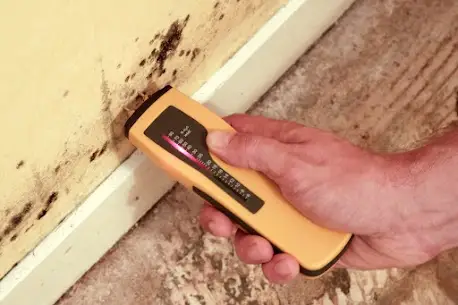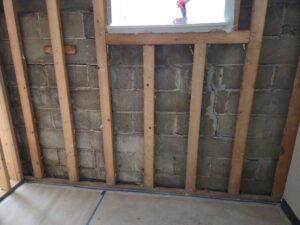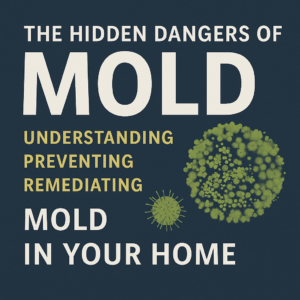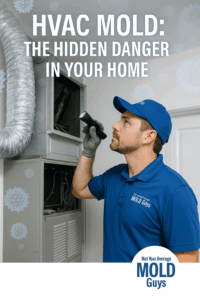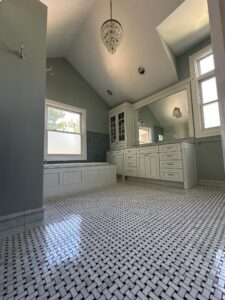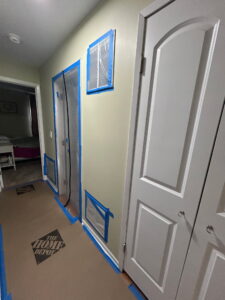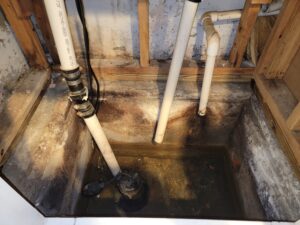Mold growth is a common concern for homeowners in the Austin area due to the region’s humid climate. When moisture levels remain unchecked, mold can develop quickly, leading to potential health issues, unpleasant odors, and costly home repairs. Mold thrives in damp environments, particularly in areas with poor ventilation or excessive humidity. The key to preventing mold is moisture control. By taking proactive steps, you can protect your home, preserve indoor air quality, and maintain a healthier living environment.
1. Address Leaks Immediately
Water leaks, whether from plumbing, roofs, or windows, create the perfect conditions for mold to thrive. Even minor drips can lead to hidden mold growth behind walls, under flooring, or inside insulation. To prevent this, regularly inspect your home for signs of leaks, such as water stains, bubbling paint, or musty odors. Common areas to check include:
- Plumbing systems – Look for leaks under sinks, around water heaters, and behind appliances.
- Roofing – Inspect for missing shingles or damaged flashing that could allow water to seep in.
- Windows and doors – Ensure seals and caulking are intact to prevent moisture intrusion.
Address any issues promptly to prevent excess moisture buildup and avoid the costly damage that mold can cause.
2. Use Dehumidifiers During Humid Seasons
Austin’s climate can be particularly humid, especially in the summer months, making it easier for mold to develop. To keep indoor humidity at safe levels, consider using dehumidifiers in high-risk areas such as:
- Basements – These areas tend to retain moisture due to limited ventilation.
- Bathrooms – Frequent showers and poor airflow can lead to excess humidity.
- Laundry rooms – Washing machines and dryers generate additional moisture.
Using a dehumidifier helps regulate moisture levels, preventing mold spores from settling and spreading. Ideally, indoor humidity should be kept between 30-50%, as mold can thrive when levels exceed 60%.
3. Ensure Proper Drainage Around Your Home
Poor drainage can lead to standing water near your home’s foundation, increasing moisture levels inside. If water collects near the exterior walls, it can seep into basements, crawl spaces, or lower levels of your home, creating the perfect environment for mold growth. To prevent this:
- Ensure gutters and downspouts direct water away from the house. Blocked or overflowing gutters can allow rainwater to pool near the foundation. Regularly clean and maintain your gutters to prevent this issue.
- Grade the soil around your home. The ground should slope away from your home’s foundation to encourage water runoff rather than accumulation.
- Fix any landscape drainage issues. If you notice pooling water in your yard after heavy rain, consider installing French drains or additional drainage solutions to redirect excess moisture.
4. Dry Wet Areas Quickly
Mold can begin to grow within 24-48 hours of exposure to moisture. Even seemingly minor incidents, such as a spilled drink, an overflowing sink, or wet carpeting, can create a breeding ground for mold if not properly dried. To minimize risk:
- Use fans and dehumidifiers to accelerate drying.
- Open windows and doors (if weather permits) to promote airflow.
- Remove and replace soaked materials, such as rugs, upholstery, or insulation, if they cannot be fully dried.
- Clean and disinfect wet areas with mold-resistant cleaners to prevent spores from developing.
By acting quickly, you can prevent long-term damage and avoid expensive mold remediation efforts.
5. Keep Indoor Humidity Below 60%
Monitoring and controlling indoor humidity is essential for mold prevention. High humidity levels create an ideal environment for mold spores to multiply. To maintain proper humidity levels:
- Use a hygrometer to measure indoor humidity levels. These inexpensive devices help you monitor moisture levels so you can adjust accordingly.
- Ventilate high-moisture areas like bathrooms, kitchens, and laundry rooms by using exhaust fans or opening windows.
- Run air conditioning to help regulate indoor temperature and reduce humidity.
- Seal leaks around windows and doors to prevent outdoor humidity from seeping inside.
Keeping indoor humidity between 30-50% is ideal for mold prevention and overall home comfort.
Need Help with Mold Issues?
If you’re already dealing with mold problems or suspect hidden moisture issues in your home, professional assistance may be necessary. Not Your Average Molds Guys specializes in identifying, treating, and preventing mold growth in Austin homes. Their expert team can assess the situation, provide effective remediation solutions, and help ensure your home remains mold-free.
📞 Call Not Your Average Molds Guy Today!
Taking proactive steps now can save you time, money, and stress in the long run. Don’t wait until mold becomes a bigger issue—protect your home and health with these essential moisture control strategies.


